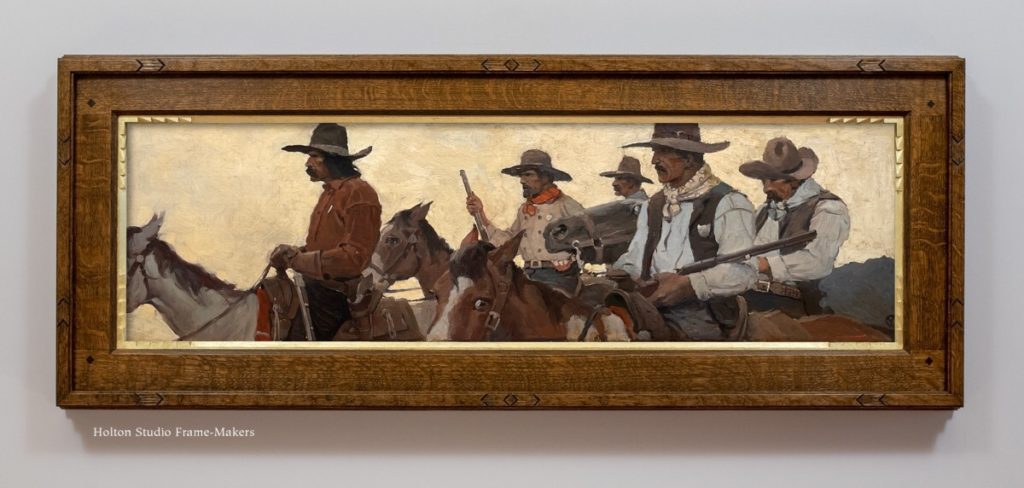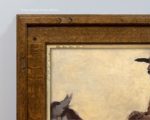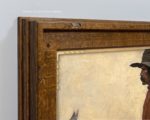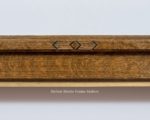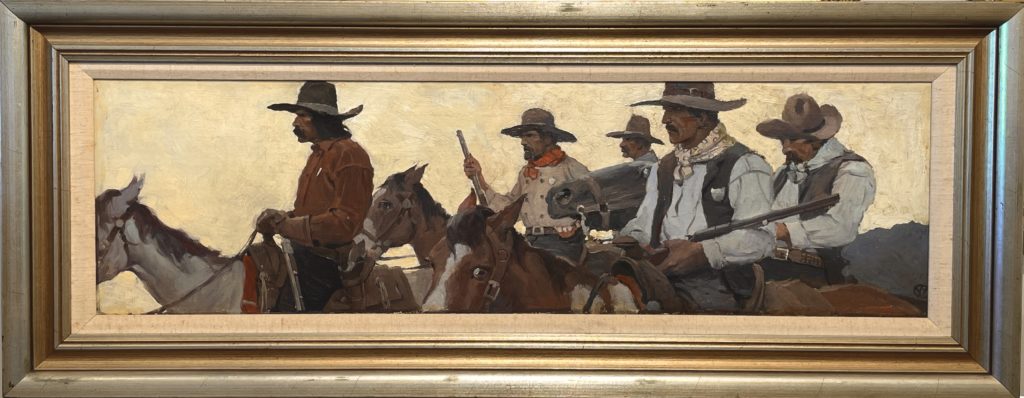Here’s how it was framed before. But don’t get me started.
N.C. Wyeth
Born and raised in Massachusetts, N.C. Wyeth moved to Wilmington, Delaware and the Brandywine Valley to study with the most admired illustrator of the time, Howard Pyle. On his blog, Lines and Color, Charley Parker writes that
While Pyle brought a new level of dynamics and drama to previously staid and theatrical approaches to illustration, Wyeth took his teacher’s mastery of drama and cranked it up to 11, placing the viewer on the edge of impending action or danger.
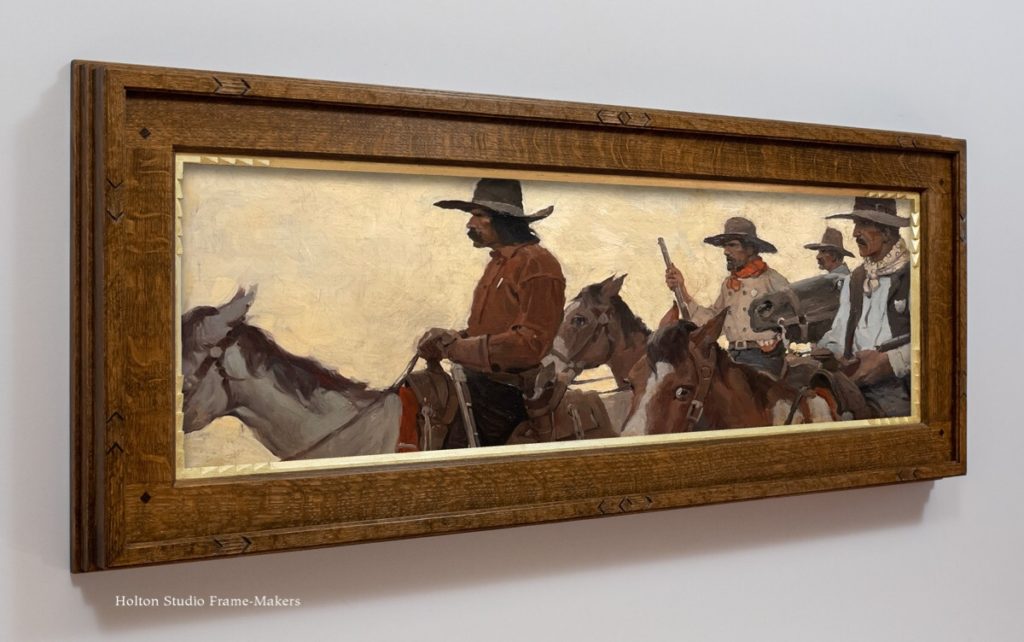 That dramatic feeling is certainly present in this piece. And, along with a genius for color, figure, landscape and still life, it would lead to the creation of a powerful body of work for Wyeth, not only for magazines but for the publisher Charles Scribner and Sons’s editions of classics like Robin Hood, The Boy’s King Arthur, Kidnapped, and, perhaps most famously, Treasure Island.
That dramatic feeling is certainly present in this piece. And, along with a genius for color, figure, landscape and still life, it would lead to the creation of a powerful body of work for Wyeth, not only for magazines but for the publisher Charles Scribner and Sons’s editions of classics like Robin Hood, The Boy’s King Arthur, Kidnapped, and, perhaps most famously, Treasure Island.
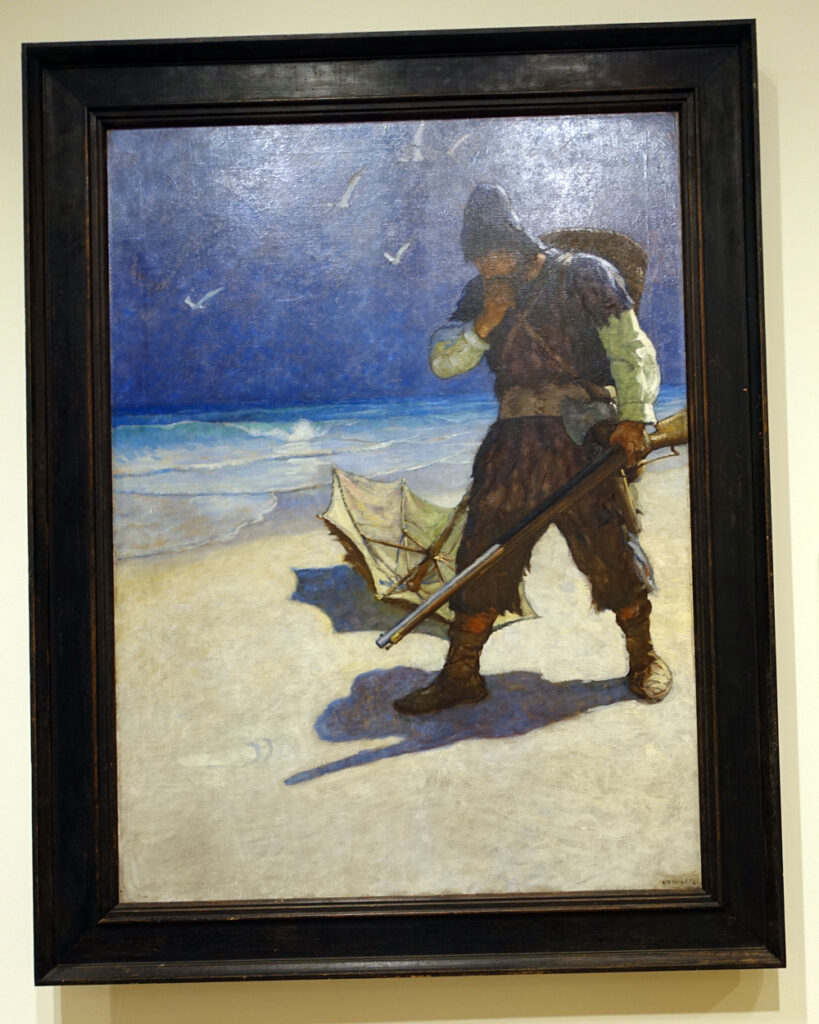 While Wyeth’s artistic achievements are more than enough to secure his place in the pantheon of American illustrators, his role as the head of one of America’s great artistic families (father of Andrew Wyeth and grandfather of Jamie Wyeth, and that’s just for starters) is also notable.
While Wyeth’s artistic achievements are more than enough to secure his place in the pantheon of American illustrators, his role as the head of one of America’s great artistic families (father of Andrew Wyeth and grandfather of Jamie Wyeth, and that’s just for starters) is also notable.
Enjoy learning more about N.C. Wyeth with a visit to the webpage for the Brandywine River Museum of Art‘s recent exhibition “N.C. Wyeth: New Perspectives.” I like Dianne L. Durante’s personal write-up of that show. She shares her own pictures of the paintings including their frames—like this 1920 painting for Robinson Crusoe, at right, in what appears to be its original dark quartersawn white oak frame.
« Back to Blog
